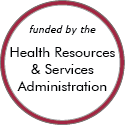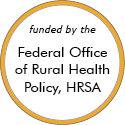Education and Training of the Rural Healthcare Workforce – Models and Innovations
These stories feature model programs and successful rural projects that can serve as a source of ideas and provide lessons others have learned. Some of the projects or programs may no longer be active. Read about the criteria and evidence-base for programs included.
Other Project Examples
Regional Initiatives in Dental Education (RIDE)

Updated/reviewed June 2024
- Need: Address oral health disparities in Washington's rural communities.
- Intervention: The University of Washington School of Dentistry (UWSOD) developed the Regional Initiatives in Dental Education (RIDE) program to increase the number of dentists prepared for the various languages and custom-specific attitudes concerning oral health in addition to the clinical competence required to practice in rural areas.
- Results: Since its start in 2009 and as of 2024, nearly 100 dentists have completed the program with over 81% practicing in rural communities.
Hawai'i Island Family Medicine Residency
Updated/reviewed January 2024
- Need: Hawai'i is experiencing a severe shortage of family medicine physicians.
- Intervention: The Hawai'i Island Family Medicine Residency (HIFMR) program uses an interprofessional team-based approach so residents learn how to care for many types of patients in different healthcare settings.
- Results: Since 2017, HIFMR has graduated a class of 3 to 6 Board-certified family medicine physicians annually. Most graduates have remained in the state to practice medicine; those who have left have entered fellowship programs and plan to return to Hawai'i Island to practice.
Premera Rural Nursing Health Initiative at the University of Washington
Added January 2024
- Need: To create rural clinical placement and postgraduate fellowship opportunities for Doctor of Nursing Practice (DNP) students and recent Advanced Registered Nurse Practitioner (ARNP) graduates in Washington.
- Intervention: The Rural Nursing Health Initiative (RNHI), a program out of the University of Washington School of Nursing that created clinical placement opportunities for DNP students and a postgraduate fellowship program for ARNP graduates.
- Results: Rural clinical stipends have been awarded to 80 DNP students, and 12 ARNPs completed rural fellowships between 2021 and 2023.
Targeted Rural Health Education Project
Updated/reviewed January 2024
- Need: Dual platform to teach both plain language use and health literacy principles to health professions students and disseminate health information to rural populations.
- Intervention: Writing project using community-specific public health data in order to write a plain language health education article suitable for publication in a rural newspaper.
- Results: Since program start in 2017, over 60 students have successfully published their plain language health education articles in 17 rural newspapers in 3 states.
Old Dominion University's Student-Run Mobile Health Clinic

Added November 2023
- Need: To fill gaps in care for rural communities in southeastern Virginia while providing clinical placement opportunities for nursing students.
- Intervention: A free mobile health clinic staffed by Old Dominion University nursing students that visits rural schools and other community centers.
- Results: Hundreds of students have gained hands-on rural experience working in the clinic since its launch.
Rural Experiences for Health Professions Students (REHPS)

Updated/reviewed July 2023
- Need: An ongoing shortage of healthcare providers in rural areas of South Dakota
- Intervention: A 4-week summer program placing health professions students in rural communities.
- Results: Of graduating participants, 71% practice in South Dakota with 30% of those graduates practicing in rural communities with populations fewer than 10,000, or veteran facilities.
FORWARD NM Pathways to Health Careers

Updated/reviewed November 2022
- Need: New Mexico's southwestern counties of Hidalgo, Catron, Luna, and Grant have experienced chronic shortages of primary care providers. New Mexico has the oldest physician population in the country.
- Intervention: A comprehensive workforce pipeline program, including programming for middle and high school students, undergraduate and graduate students, primary care program students, and medical and dental residents.
- Results: The program reaches over 1,000 school-aged students throughout the service areas and provides support for students and medical residents in a variety of healthcare-related programs for rural rotation experiences. FORWARD NM received its designation as an Area Health Education Center (AHEC) in 2012.
Rescue Divas EMT Recruitment
Updated/reviewed June 2022
- Need: Increased number of emergency medical technicians in rural northern Wisconsin.
- Intervention: Creation of a program, Rescue Divas, for middle school girls to spark interest in emergency medical services careers.
- Results: Post-participation results demonstrate the camp increases interest in an emergency medical services career.
Last Reviewed: 12/9/2024

